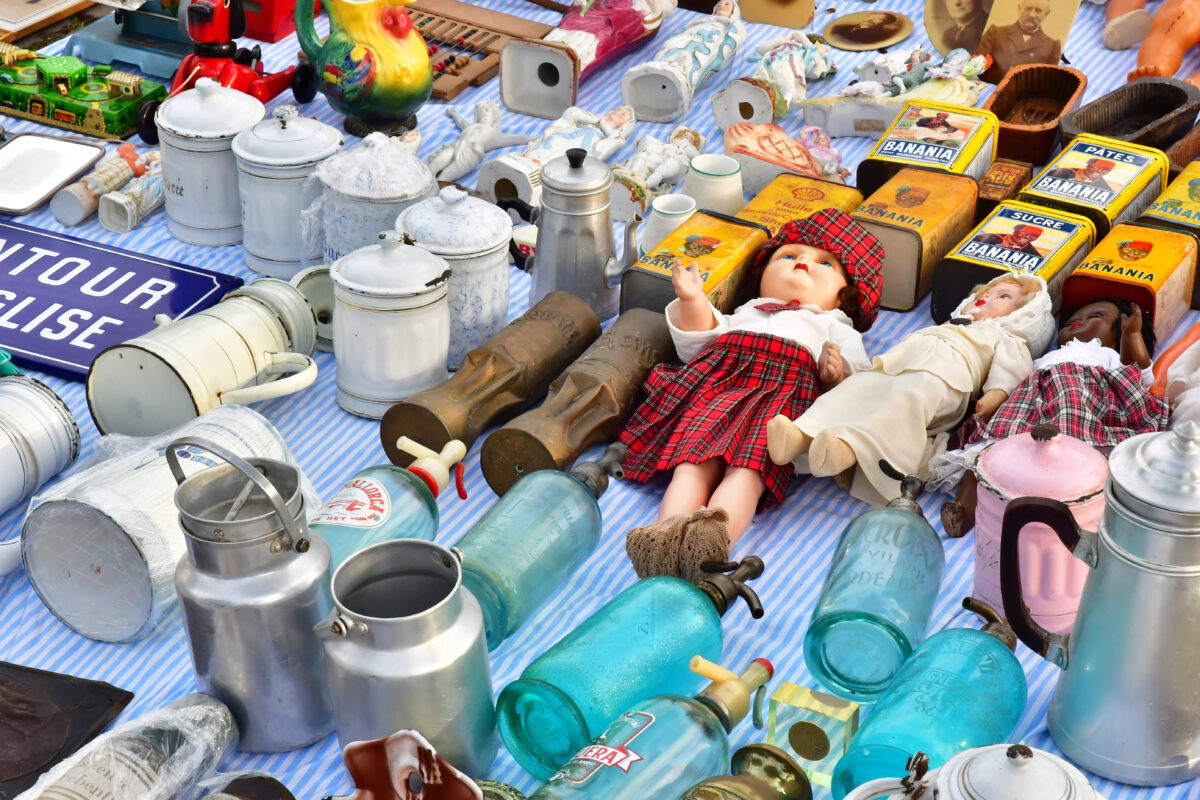Looking from the outside in, the difference between a flea market and a thrift store is insignificant – to most. Both affairs can be entirely unique experiences, with notable contrasts in everything from selection to cost to time of day or year. Today, we’re zooming out for a look at what makes events like the HWY 404 & Steeles Flea Market not only different than thrifting, but truly one-of-a-kind among flea markets.
What is a Flea Market?
A flea market is a type of shared market where vendors sell secondhand or handmade goods within an outdoor or indoor location. Sellers range from professional antique dealers to casual individuals clearing out their homes. The merchandise can span virtually every category: vintage clothing, books, records, furniture, jewelry, tools, artwork, toys, and curiosities.
Flea markets typically operate on weekends or specific days. Dozens to hundreds of individual vendors rent booth space to display their wares at a set time and place.
Each gathering is an opportunity for small-scale entrepreneurs and local shoppers alike. The first party benefits from increased exposure while the second gets access to unique items at bargain prices. Meanwhile, entire communities prosper through the promotion of sustainable consumption through the reuse of goods.
What is a Thrift Store?
A thrift store is a retail establishment that sells donated secondhand goods at discounted prices, typically operated by charitable organizations, non-profits, or for-profit businesses. Popular chains include Goodwill, Salvation Army, and local charity shops. The merchandise is usually organized by category and priced significantly below retail value.
Thrift stores serve a dual purpose: they provide affordable shopping options for budget-conscious consumers while generating revenue for charitable causes or business operations. Many thrift stores also offer job training programs and community services.
What’s the Difference Between a Flea Market and a Thrift Store?
With so much overlap between product type, shopper interests, and cost-saving appeal, it’s easy to paint flea markets and thrift stores as one and the same. And there are plenty of similarities between flea markets and thrift stores; whether hunting for valuable antiques or simply enjoying the treasure-hunt atmosphere, visitors are drawn to the unpredictable nature of what they might find. But several differences exist as well. We’ve listed just a few below.
Sales Environment
Flea markets function as gathering places where people browse, haggle, socialize, and discover unexpected treasures. The social aspect is extremely important – and a key difference – in comparison to thrift stores, which operate primarily as independent businesses or entities.
Pricing Structure
Flea market prices are typically negotiable, with haggling being an expected and often enjoyable part of the shopping experience. Vendors may adjust prices based on factors like time of day, weather, or customer interest. Thrift stores, conversely, use fixed pricing with occasional sales or discount days, creating a more traditional retail experience.
Operating Schedule
Flea markets operate temporarily on specific days, usually weekends, and may change locations seasonally. This creates a sense of urgency and limited availability. Thrift stores maintain permanent locations with consistent hours throughout the week, offering reliable access for regular shoppers.
Vendor vs. Institutional Model
Flea markets consist of individual vendors who personally select, price, and sell their merchandise, often sharing stories about items’ origins. Thrift stores rely on donated inventory processed by staff, creating less personal connection between seller and buyer but ensuring consistent product flow.
Purpose and Profit Distribution
While both serve budget-conscious consumers, their underlying purposes differ significantly. Flea market vendors are primarily independent entrepreneurs seeking direct profit from their sales. Thrift stores, particularly those run by charitable organizations, channel proceeds toward community programs, job training, and social services.

Remember, Neither Event Guarantees a Specific Find
Whether you choose a flea market’s social atmosphere and negotiable prices or a thrift store’s organized layout and consistent hours, both offer sustainable shopping alternatives that benefit communities while providing unique finds at affordable prices.
Successful treasure hunting in either format ultimately requires patience, persistence, and an open mind. The key to walking away happy in both cases is to enjoy the experience itself – the hunt, the stories, and the occasional surprise – rather than focusing solely on finding predetermined items.
Experience the Thrill of the Hunt at the Flea Market
If you want to make your discovery of what makes a flea market stand out, the HWY 404 & Steeles Flea Market maintains a high status for both excellent vendor quality and product selection. Stop by during regular hours and explore the possibilities today.

